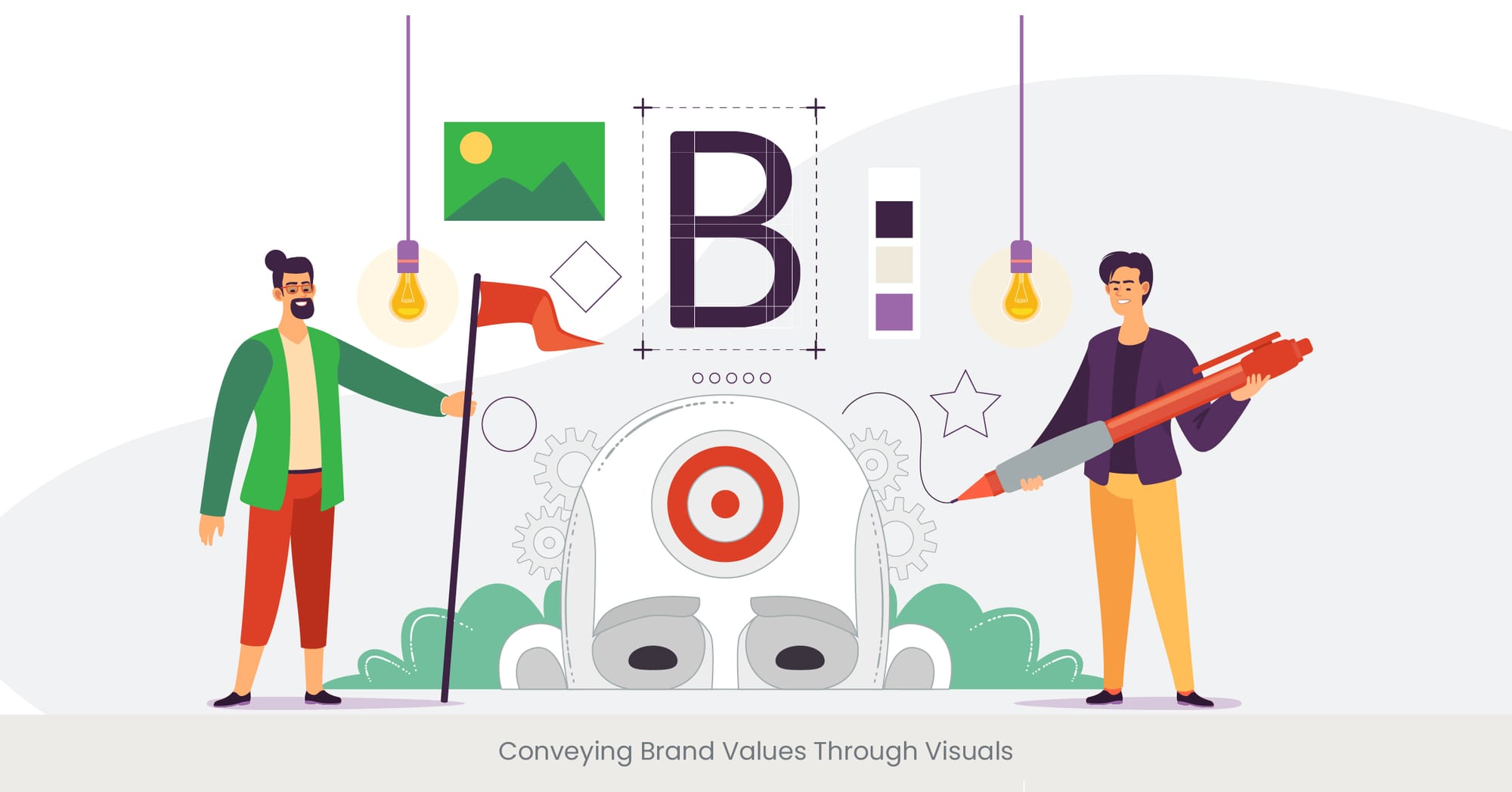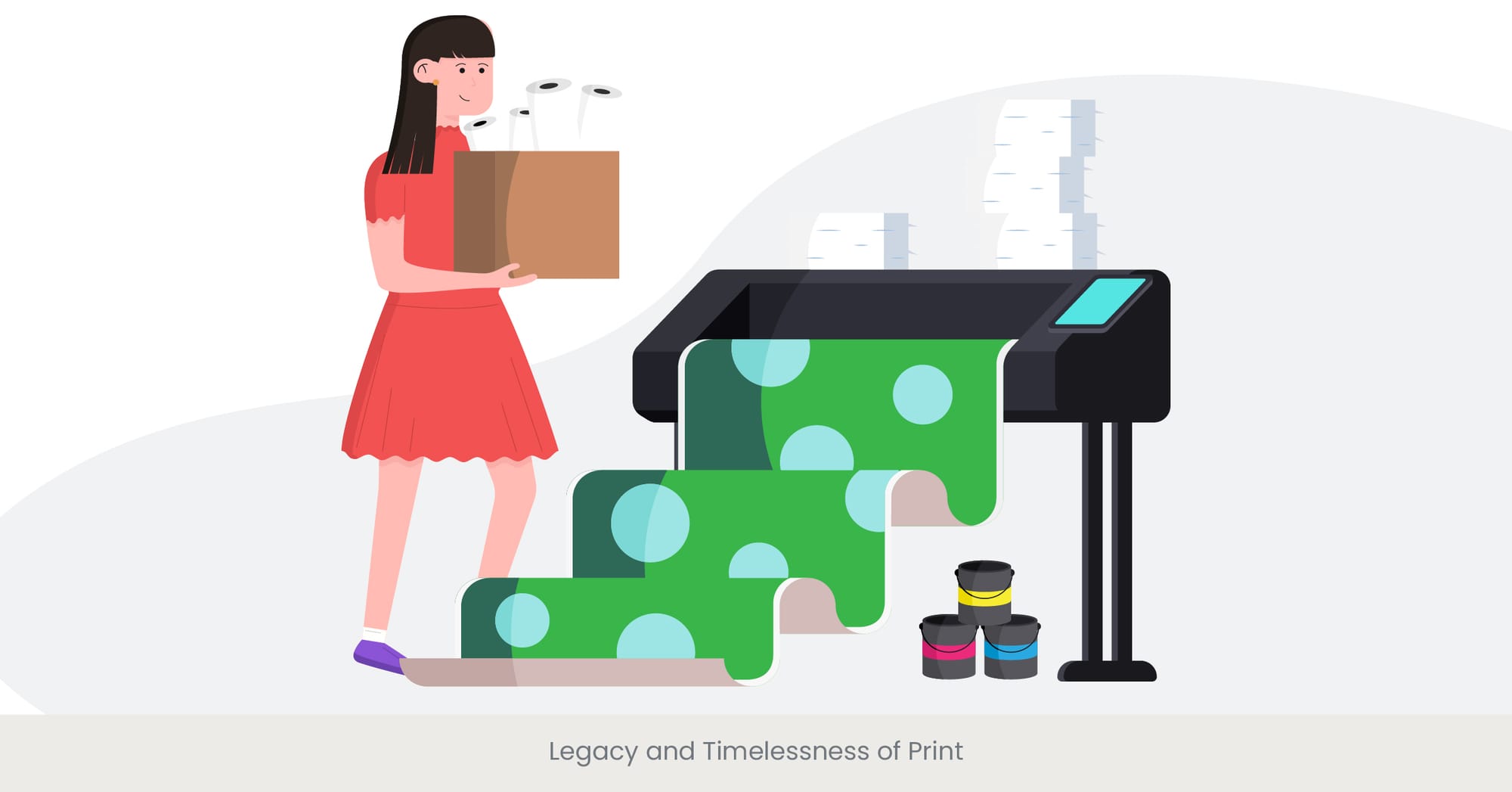
Coffee Table Books as Brand Extensions

Expanding Your Brand with Coffee Table Books
Coffee table books serve as a unique and effective way for brands to extend their reach and connect with their audience. These large, glossy books, often filled with rich photography and captivating stories, offer more than just a visual appeal; they encapsulate the essence of a brand's identity. When companies invest in coffee table book design services for branding, they create an enduring product that showcases their story and values. These books act as a tangible representation of a company's image and can be a significant part of a comprehensive marketing strategy, enhancing brand identity in an elegant and memorable way. Custom coffee table books are tailored to align with a brand's unique messaging and aesthetic, making them stand out from generic marketing materials.
The Business Need for Coffee Table Books
The business need for coffee table books stems from their ability to serve as sophisticated marketing tools. Unlike traditional brochures or online content, luxury coffee table book printing has a timeless quality that keeps them relevant over a longer period. They are not just books; they are art pieces that occupy a place of pride in homes and offices. This makes them a perfect medium to convey brand values and company achievements. Companies like Louis Vuitton and Apple have successfully used bespoke coffee table books to highlight their brand's heritage and craftsmanship, creating a deep emotional connection with their customers. This deep dive into coffee table book publishing for branding shows how these books can be more than just marketing tools; they are investments in the brand’s legacy.
Real-World Examples of Coffee Table Books as Marketing Tools
Take the example of Nike's coffee table book, "Nike: Better is Temporary." This book not only showcases the brand's iconic designs and innovations but also tells the reader the story behind each product's development. Similarly, BMW's coffee table book "BMW: Driving Luxury" illustrates the company's history and its evolution in the automotive industry. These corporate coffee table books serve as powerful marketing tools, presenting the brand's journey, milestones, and future vision in a visually appealing format. The high-quality print and luxurious feel of these books ensure they are cherished by readers, leaving a lasting impression and reinforcing brand loyalty.
References to Validate the Impact of Coffee Table Books
According to a study by the Harvard Business Review, brands that invest in high-quality visual content, such as custom coffee table books, see a significant increase in brand engagement and customer loyalty. The study highlights that these books' tangible nature helps in creating a lasting impact on the audience. Additionally, a report by Forbes emphasizes that defining coffee table books can effectively differentiate a brand in a crowded market, providing a unique way to tell a company’s story. Furthermore, data from Statista shows that the market for luxury coffee table book printing has grown steadily over the past decade, indicating a strong demand for these premium products. These references underline the importance and effectiveness of coffee table books as part of a brand's marketing strategy.
Conveying Brand Values Through Visuals

Visual Storytelling: A Key to Brand Identity
Visuals are a powerful tool for conveying brand values, and coffee table books excel in this realm. These books offer a unique platform to showcase a company’s essence through high-quality photography, illustrations, and design. By presenting a visually rich narrative, coffee table books can communicate complex ideas and emotions that align with the brand’s identity. For businesses, the need for coffee table books lies in their ability to transform abstract brand values into tangible and engaging content that resonates with the audience. This method of visual storytelling not only enhances the brand’s image but also creates a deeper connection with the readers.
The Art of Visual Communication
The effectiveness of coffee table books as marketing tools is deeply rooted in the principles of visual communication. Brands like Hermès and National Geographic have mastered this art by using stunning imagery to tell their stories. The key is to select visuals that not only attract attention but also align with the brand's core values and mission. A well-curated coffee table book can include a variety of visual elements—photography, illustrations, and infographics—that together create a cohesive and compelling narrative. The process of coffee table book publishing for branding involves meticulous planning and design to ensure that every image contributes to the overall message.
Showcasing Values Through Real-World Examples
One notable example of conveying brand values through visuals is the "Chanel: Collections and Creations" coffee table book. This book captures the essence of Chanel's timeless elegance and innovation through stunning photographs and behind-the-scenes insights. Similarly, the "National Geographic: The Photographs" coffee table book showcases the organization's commitment to exploring and documenting the natural world. These books are not just collections of images; they are carefully crafted narratives that highlight the brand or organization's values, such as creativity, exploration, and excellence. By presenting these values visually, companies can engage their audience in a more profound and lasting way.
Validating the Impact of Visual Storytelling
Research from the Content Marketing Institute highlights that visual content is 40 times more likely to be shared on social media than other types of content, underscoring the importance of visuals in brand communication. A report by Nielsen also indicates that consumers are more likely to remember information that is presented visually. Furthermore, a study published in the Journal of Marketing Research found that brands using high-quality visuals in their marketing efforts see a 20% increase in customer engagement. These statistics validate the power of photos and coffee table books in effectively conveying brand values through visuals, making them an essential tool in any branding strategy.
Storytelling in Corporate Branding

The Power of Storytelling in Branding
Storytelling is a fundamental element in corporate branding, enabling companies to create a strong emotional connection with their audience. Coffee table books are particularly effective in this regard, as they offer a rich medium for detailed and engaging storytelling. By weaving together narratives that highlight a company’s journey, values, and vision, coffee table books serve as powerful marketing tools that go beyond conventional advertising. These books allow brands to present their story in a visually appealing and memorable way, making them an invaluable asset in enhancing brand identity and engaging readers on a deeper level.
Crafting a Compelling Corporate Narrative
The business need for coffee table books arises from their ability to convey a brand's story with depth and sophistication. A compelling corporate narrative should include the company's origins, significant milestones, challenges overcome, and future aspirations. This storytelling approach not only humanizes the organization and brand but also builds trust and loyalty among customers. The process of creating a custom coffee table book involves meticulous planning and design, ensuring that every element—from the text and images to the layout and print quality—contributes to a cohesive and impactful story. By presenting a well-crafted narrative, companies can differentiate themselves in the market and leave a lasting impression on their audience.
Real-World Examples of Corporate Storytelling
One excellent example of storytelling in corporate branding is the "Patagonia: Business Outside the Box" coffee table book. This book tells the story of Patagonia's commitment to environmental sustainability and its journey from a small startup to a global brand. Through compelling narratives and stunning visuals, the book effectively communicates Patagonia's values and mission. Similarly, the "LEGO: A Celebration of the Building Block" coffee table book showcases the brand's rich history and its impact on creativity and play. These corporate coffee table books illustrate how storytelling can transform brand values into engaging narratives that resonate with readers and reinforce brand identity.
Research Supporting Storytelling in Branding
According to a report by Forbes, brands that use storytelling in their marketing efforts see a significant increase in customer engagement and loyalty. The report highlights that storytelling helps brands connect with their audience on an emotional level, making the brand more relatable and memorable. Additionally, a study by Stanford University found that stories are up to 22 times more memorable than facts alone, emphasizing the importance of storytelling in corporate branding. Furthermore, data from the Harvard Business Review indicates that companies that effectively use storytelling in their marketing strategies achieve higher brand equity and customer retention rates. These findings underscore the value of incorporating storytelling into corporate branding through mediums like coffee table books.
Showcasing Company History and Heritage

Preserving Legacy Through Coffee Table Books
Showcasing a company's history and heritage is a powerful way to build brand identity and connect with customers on a deeper level. Coffee table book design services offer an ideal medium for this purpose, providing a visually rich and engaging format to present a company’s legacy. By documenting significant milestones, achievements, and the evolution of the brand, custom coffee table books can convey the depth and richness of a company’s history. These books serve as both a tribute to the company's journey and a testament to its enduring values, making them valuable tools in reinforcing brand identity and loyalty.
Deep Dive into Company Heritage
The business need for bespoke coffee table books in showcasing company history stems from their ability to present a detailed and visually appealing narrative. A well-crafted coffee table book design service can include a timeline of important events, profiles of key figures, and stories behind major milestones. This deep dive into the company's heritage helps to create a comprehensive and engaging account of its journey. For example, a luxury coffee table book printing for a family-owned business might highlight the founders' vision, the growth of the company over generations, and the enduring values that have driven its success. By presenting this rich history in a visually stunning format, companies can effectively communicate their heritage to both current and future customers.
Real-World Examples of Showcasing Heritage
One notable example of using coffee table book design services to showcase company history is the "Louis Vuitton: The Birth of Modern Luxury" book. This beautifully designed book traces the brand's origins, its evolution over the years, and its impact on the fashion industry. It includes archival photos, advertisements, and stories that highlight the brand's commitment to quality and innovation. Another example is the "Coca-Cola: An American Original" luxury coffee table book printing, which documents the history of one of the world's most iconic brands through a rich collection of photographs, advertisements, and historical anecdotes. These corporate bespoke coffee table books effectively use visual storytelling to celebrate the companies' heritage and connect with their audience on an emotional level.
Research Validating the Importance of Heritage
Research from the Journal of Brand Management emphasizes that showcasing a company's history and heritage can significantly enhance brand equity and customer loyalty. The study found that consumers are more likely to trust and engage with brands that have a well-documented and authentic history. Additionally, a report by McKinsey & Company highlights that companies that effectively communicate their heritage can differentiate themselves in a crowded market and create a stronger emotional connection with their customers. Furthermore, data from the Content Marketing Institute indicates that visually rich content, such as custom coffee table books, is highly effective in engaging audiences and conveying brand values. These findings underscore the importance of using coffee table books to showcase company history and heritage.
Celebrating Milestones and Achievements

Highlighting Success Through Coffee Table Books
Celebrating milestones and achievements is crucial for reinforcing a company’s brand identity and showcasing its journey of success. Coffee table book design services provide an excellent medium to document and highlight these significant moments in a visually appealing and engaging way. These books serve not only as a chronicle of accomplishments but also as a testament to the company's growth and evolution. By capturing these milestones in a beautifully designed format, bespoke coffee table books can convey a powerful narrative of success, resilience, and innovation that resonates with both internal and external audiences.
The Business Need for Highlighting Achievements
The business need for coffee table book design services in celebrating milestones and achievements is rooted in their ability to provide a lasting and tangible record of a company’s journey. These books can include detailed accounts of key events, successes, and awards, complemented by high-quality images and illustrations. This approach not only enhances the company’s credibility but also serves as a motivational tool for employees and a compelling narrative for customers. The process of luxury coffee table book printing for branding involves curating content that highlights the company’s achievements in a way that aligns with its brand values and vision. By doing so, businesses can effectively communicate their legacy of success and inspire confidence among stakeholders.
Real-World Examples of Celebrating Milestones
One notable example of a bespoke coffee table book celebrating milestones is the "Microsoft: A History of Innovation" book, which documents the company’s journey from its inception to becoming a global tech giant. The book highlights significant achievements, such as the launch of Windows, the development of groundbreaking technologies, and major milestones in the company’s history. Another example is the "Tesla: Accelerating the Future" custom coffee table book, which showcases the company’s achievements in electric vehicles and sustainable energy. These corporate coffee table books serve as powerful tools to celebrate and communicate the companies’ milestones and achievements, reinforcing their brand identity and legacy.
Research Supporting the Impact of Celebrating Milestones
Research by the Harvard Business School highlights that celebrating company milestones and achievements can significantly boost employee morale and engagement. The study found that recognizing and documenting achievements helps to build a positive organizational culture and fosters a sense of pride and accomplishment among employees. Additionally, a report by Deloitte emphasizes that showcasing milestones through visually rich mediums, such as luxury coffee table book printing, can enhance brand perception and customer loyalty. Furthermore, data from the American Marketing Association indicates that companies that effectively highlight their achievements in their marketing efforts see higher levels of brand engagement and customer trust. These findings underscore the importance of using coffee table books to celebrate and communicate company milestones and achievements.
The Role of Quality and Craftsmanship

Elevating Brand Perception Through Quality
Quality and craftsmanship play a pivotal role in shaping a brand’s identity and perception. Coffee table books, with their emphasis on high-quality materials, meticulous design, and exceptional craftsmanship, serve as a perfect example of how these elements can enhance a brand’s image. By investing in luxury coffee table book printing, companies can create products that not only convey their message but also reflect their commitment to excellence. These books, often seen as collector’s items, can significantly elevate the brand’s status and appeal to discerning customers who value quality and artistry.
Deep Dive into Craftsmanship and Quality
The business need for coffee table book design services arises from their ability to showcase a brand's dedication to quality and craftsmanship. Every aspect of a coffee table book—from the selection of premium paper and high-resolution images to the binding and printing techniques—speaks volumes about the brand's attention to detail and pursuit of perfection. Companies like Rolex and Rolls-Royce have used bespoke coffee table books as marketing tools to highlight their superior craftsmanship and timeless quality. These books not only serve as marketing assets but also as statements of the brand's legacy and ethos. By focusing on quality and craftsmanship, brands can create a lasting impression that resonates with customers and enhances their overall brand identity.
Examples of Excellence in Craftsmanship
A prime example of a custom coffee table book that exemplifies quality and craftsmanship is "Rolex: The Impossible Collection." This book, published by Assouline, is a masterpiece in itself, featuring meticulously curated content and exquisite design that reflects the brand's heritage of precision and luxury. Another example is "The Ferrari Book - Passion for Design" which showcases the unparalleled craftsmanship and design excellence of Ferrari through stunning photography and detailed narratives. These corporate coffee table books are more than just marketing tools; they are works of art that embody the essence of the brands they represent. By investing in high-quality luxury coffee table book printing, companies can effectively communicate their commitment to excellence and craftsmanship.
Research Validating the Importance of Quality
A study by the Journal of Marketing found that consumers perceive brands that emphasize quality and craftsmanship more favorably and are more likely to remain loyal to them. The study highlights the idea that high-quality marketing materials, such as bespoke coffee table books, can significantly enhance brand perception and customer trust. Additionally, a report by McKinsey & Company emphasizes that investing in premium products and materials can differentiate a brand in a competitive market and attract high-end customers. Furthermore, data from Statista indicates that the market for luxury coffee table books has seen consistent growth, reflecting a strong demand for high-quality, well-crafted products. These findings underscore the importance of quality and craftsmanship in enhancing brand identity and appeal.
Differentiating Your Brand in the Market
Standing Out with Coffee Table Books
Standing out in today's competitive marketplace requires strategic efforts to capture attention and cultivate a loyal following. One such way to do this is through custom coffee table books. These visually striking books allow brands to narrate their story, values, and offerings in a memorable and visually engaging manner. By embracing coffee table book design services, businesses can differentiate their identity in a crowded market, leaving a lasting impression that goes beyond traditional marketing materials.
The Strategy Behind Differentiation
Differentiating your brand means identifying what makes your company unique. Custom coffee table books are a highly effective tool in this strategy. Through luxury coffee table book printing, a brand can emphasize its craftsmanship, values, and exclusive offerings. By showcasing unique elements—such as sustainability efforts, product craftsmanship, or groundbreaking designs—brands can create distinct narratives. This type of storytelling within bespoke coffee table books gives customers a deeper understanding of what makes the brand special, strengthening their emotional connection to the business.
Real-World Examples of Differentiation
Several brands have already turned to coffee table book design services to set themselves apart. Take Starbucks, for example. Their coffee table book “The Starbucks Experience” highlights the company’s dedication to coffee culture, community, and ethical sourcing. This approach, coupled with luxury coffee table book printing, helps reinforce the Starbucks ethos of quality and care. Another standout example is Nike’s "Art of Innovation" book, showcasing cutting-edge designs and revolutionary technologies. These bespoke coffee table books have helped solidify both brands' identities in the minds of their consumers.
Research Supporting Differentiation Strategies
Studies by the Content Marketing Institute and Harvard Business Review emphasize the impact of custom coffee table books in brand differentiation. Visual storytelling and high-quality design help boost recognition and customer loyalty, leading to increased engagement. These research findings underscore the effectiveness of luxury coffee table book printing as a differentiation tool in building a strong brand presence.
Building Emotional Connections

Creating Bonds Through Coffee Table Books
Emotional branding is essential for fostering a deep connection with customers, and bespoke coffee table books are an excellent medium for this. Through captivating imagery, storytelling, and a tactile experience, custom coffee table books offer more than just marketing—they create cherished memories and a deeper sense of belonging with the brand. These books make an emotional impact, helping brands build lasting relationships with their customers by presenting their story in a sensory format.
The Psychology Behind Emotional Branding
Emotional branding focuses on forming a connection that resonates with a brand’s audience on a deeper, more personal level. Luxury coffee table book printing elevates this emotional appeal by blending visual allure with compelling narratives. For example, a bespoke coffee table book could evoke feelings of nostalgia or inspiration, making it more than just a promotional tool—it becomes an experience that customers can keep and revisit.
Examples of Emotional Connection in Action
Brands such as Johnnie Walker use their coffee table books to create emotional connections with customers. In their book "A Long Stride," the company conveys its rich heritage and enduring commitment to excellence. Likewise, Humans of New York uses its visually engaging format to tell stories that resonate emotionally, showing how powerful coffee table books can be in establishing an emotional bond with readers.
Research Validating Emotional Branding
The Journal of Consumer Research shows that emotional connections lead to higher customer loyalty and engagement. Brands using custom coffee table books to build emotional ties often see an increase in satisfaction and long-term customer retention. Emotional branding, amplified through luxury coffee table book printing, helps create lasting impressions, as supported by research from Forrester and Nielsen.
Want to dive deeper into the process of designing a bespoke coffee table book? View our detailed guides to learn more about creating a powerful marketing tool that tells your brand’s story.
Legacy and Timelessness of Print

The Enduring Appeal of Print Media
In today’s digital world, the value of print media is undiminished. Coffee table books stand out by offering a permanent, tangible experience that digital content cannot replicate. This timeless appeal makes them an ideal marketing tool for companies wishing to preserve their legacy. Bespoke coffee table books allow companies to encapsulate their brand story in a physical form that commands respect and attention.
The Timeless Quality of Printed Materials
Print offers permanence—something fleeting digital content cannot achieve. Custom coffee table books provide a tactile experience, making them an enduring presence in any home or office. These bespoke coffee table books are crafted to last, with high-quality materials ensuring they remain relevant and impactful for years. The tangible nature of these books, along with the careful design and printing, makes them invaluable assets for creating a long-lasting brand impression.
Examples of Print Legacy in Action
Books such as National Geographic: The Photographs and The Rolling Stones: 50 showcase how luxury coffee table book printing can preserve and celebrate a brand’s history. By immortalizing iconic imagery and stories, these bespoke coffee table books help reinforce a legacy that continues to resonate with readers long after the original publication.
Research Supporting the Value of Print
Pew Research Center data affirms that print media holds a strong position in consumer perception due to its credibility and permanence. Consumers are more likely to trust coffee table books than digital content, with luxury coffee table book printing offering a sense of authority and reliability. Nielsen's findings also highlight the increased engagement that print media generates, emphasizing the importance of using custom coffee table books to ensure a brand’s timeless appeal.
Our luxury coffee table book printing services deliver top-quality craftsmanship.
Want to make a lasting impression with your brand’s printed materials?
Let’s talk about how we can elevate your brand with a premium product!
Collaborating with Designers and Artists

Enhancing Brand Identity Through Collaboration
Working with designers and artists to create bespoke coffee table books is a strategy that significantly elevates the impact of branding efforts. Designers bring a fresh perspective, ensuring that the brand’s vision is translated into a visually stunning and cohesive narrative. Custom coffee table books are not just marketing tools; they are works of art that showcase creativity while aligning perfectly with the brand’s identity.
The Creative Process of Collaboration
Coffee table book design services involve collaboration between companies, designers, and artists to ensure the end product aligns with brand identity. Designers contribute expertise in layout, typography, and visual elements, while artists add their unique flair through original illustrations and photography. The result is a bespoke coffee table book that is both visually stunning and strategically aligned with the brand’s values.
Examples of Successful Collaborations
A prime example of effective collaboration is the Louis Vuitton: The Birth of Modern Luxury book, which involved top-tier designers and artists to create a narrative that reflects the brand's legacy of luxury. Similarly, The Art of Burning Man is another example where collaboration resulted in a visually captivating and narrative-rich coffee table book that celebrates creativity and artistry. These books underscore how working with talented professionals can elevate a brand’s marketing materials.
Research Supporting Collaborative Efforts
According to the Design Management Institute, design-driven brands outperform their competitors by over 200%, with collaboration between companies and creative professionals being key. Coffee table book design services are a proven way for brands to invest in design, with bespoke coffee table books demonstrating the importance of creative collaboration in driving business success.
To inspire your next coffee table book layout design, here's a video showcasing the top 10 interior design coffee table books. Whether you’re designing a custom book for your brand or looking for inspiration, these books exemplify creativity and elegance in design. Watch this video for some stunning examples of how to curate and design a coffee table book that’s both visually captivating and impactful.
In an increasingly competitive landscape, using luxury coffee table book printing is a strategic way to differentiate your brand, build emotional connections, and preserve your legacy. Whether you’re using custom coffee table books to tell your brand’s story or collaborating with designers to create something truly unique, these books offer an unparalleled way to communicate your brand identity. So, why not invest in bespoke coffee table books that leave a lasting impact on your audience? The benefits are clear—stronger emotional bonds, heightened brand recognition, and a legacy that endures for years.
Looking to create a custom coffee table book that defines your brand? Our experts at INK PPT can help you craft the perfect piece that reflects your unique story. Learn more about how we can bring your vision to life!
Frequently Asked Questions
1. Are coffee table books profitable?
Yes, coffee table books can be profitable. They often target niche markets and high-end customers who value quality and aesthetics. By positioning coffee table books as luxury items and marketing them effectively, companies can generate significant revenue. The profitability also depends on factors such as production costs, pricing strategy, and distribution channels.
2. Why are coffee table books important?
Coffee table books are important because they serve as powerful marketing tools that enhance brand identity. They provide a visually appealing way to tell a company’s story, showcase its values, and highlight its achievements. These books can create emotional connections with customers, serve as memorable keepsakes, and reinforce an understanding of a brand’s legacy and heritage.
Coffee table books are important because they serve as powerful marketing tools that enhance brand identity. They provide a visually appealing way to tell a company’s story, showcase its values, and highlight its achievements. These books can create emotional connections with customers, serve as memorable keepsakes, and reinforce an understanding of a brand’s legacy and heritage.
3. How to make a coffee table book to sell?
To make a coffee table book to sell, start by defining your concept and audience. Collaborate with designers and artists to create a visually stunning cover and layout. Select high-quality materials and printing techniques to ensure the book stands out. Once the book is ready, market it through various channels, including your website, social media, and partnerships with retailers or influencers. Make sure to price it appropriately based on production costs and target market.
To make a coffee table book to sell, start by defining your concept and audience. Collaborate with designers and artists to create a visually stunning layout. Select high-quality materials and printing techniques to ensure the book stands out. Once the book is ready, market it through various channels, including your website, social media pages, and partnerships with retailers or influencers. Make sure to price it appropriately based on production costs and target market.
4. How expensive is it to make a coffee table book?
The cost of making a coffee table book can vary widely depending on factors such as the quality of materials, the size and complexity of the design, the number of pages, and the printing techniques used. On average, production costs can range from a few thousand to tens of thousands of dollars. Collaborating with experienced designers and printers can help manage costs while ensuring a high-quality final product.
5. What are the benefits of coffee table books?
The benefits of coffee table books include enhancing brand identity, creating emotional connections with customers, and serving as effective marketing tools. They provide a tangible way to display and showcase a company’s history, values, and achievements. Additionally, coffee table books can be used as corporate gifts, adding a personal touch to business relationships and further reinforcing the brand.
The benefits of coffee table books include enhancing brand identity, creating emotional connections with customers, and serving as effective marketing tools. They provide a tangible way to display and showcase a company’s history, values, and achievements. Additionally, coffee table books can be used as corporate gifts, adding a personal touch to business relationships and further reinforcing the brand.
6. Is there a market for coffee table books?
Yes, there is a market for coffee table books, especially among high-end consumers, collectors, and enthusiasts of specific subjects. The market includes both interested individual buyers and businesses that use these books for branding and marketing purposes. The demand for well-crafted, visually appealing coffee table books remains strong, particularly in sectors such as art, fashion, travel, and luxury goods.
Yes, there is a market for coffee table books, especially among high-end consumers, collectors, and enthusiasts of specific subjects. The market includes both individual buyers and businesses that choose to use these books for branding and marketing purposes. The demand for well-crafted, visually appealing coffee table books remains strong, particularly in sectors such as art, fashion, travel, and luxury goods.
7. Why are coffee table books a thing?
Coffee table books are a thing because they combine visual appeal and color with substantive content, making them attractive and engaging. They serve as conversation starters, decorative items, and sources of inspiration and information. For brands, coffee table books offer a unique way to communicate their story and values, making them an integral part of their marketing and branding strategies.
8. What is the objective of a coffee table book?
The objective of the author of a coffee table book is to provide a visually engaging and informative experience that reflects the brand’s identity and values. These books aim to captivate readers with high-quality images and compelling narratives, serving as both promotional materials and keepsakes. The ultimate goal is to enhance brand recognition, create emotional connections, and leave a lasting impression on the audience.
The objective of the author of a coffee table book is to provide a visually engaging and informative experience that reflects the brand’s identity and values. These books aim to captivate readers with high-quality images and compelling narratives, serving as both promotional materials and keepsakes. The ultimate goal is to enhance brand recognition, create emotional connections, and leave a lasting impression on the audience.
9. How much does it cost to publish a coffee table book?
The cost to publish a coffee table book can vary significantly based on factors such as the quality of materials, the complexity of the design, and the printing method. On average, publishing a high-quality coffee table book can range from $5,000 to $50,000 or more. This includes costs for design, photography, editing, printing, and distribution. Working with experienced professionals can help ensure the final product meets high standards while managing costs.
10. Is there a market for coffee table books?
Yes, there is a market for coffee table books, particularly among consumers who appreciate high-quality, visually appealing publications. This market includes collectors, enthusiasts of specific topics (such as art, fashion, or travel), and businesses that use copies of these books for branding and marketing purposes. The continued demand for well-crafted coffee table books highlights their enduring appeal and value.
Yes, there is a market for coffee table books, particularly among consumers who appreciate high-quality, visually appealing publications. This market includes collectors, enthusiasts of specific topics (such as art, fashion, or travel), and businesses that use copies of these books for branding and marketing purposes. The continued demand for well-crafted coffee table books highlights their enduring appeal and value.



%20(1).jpg)
%20(1).jpg)


